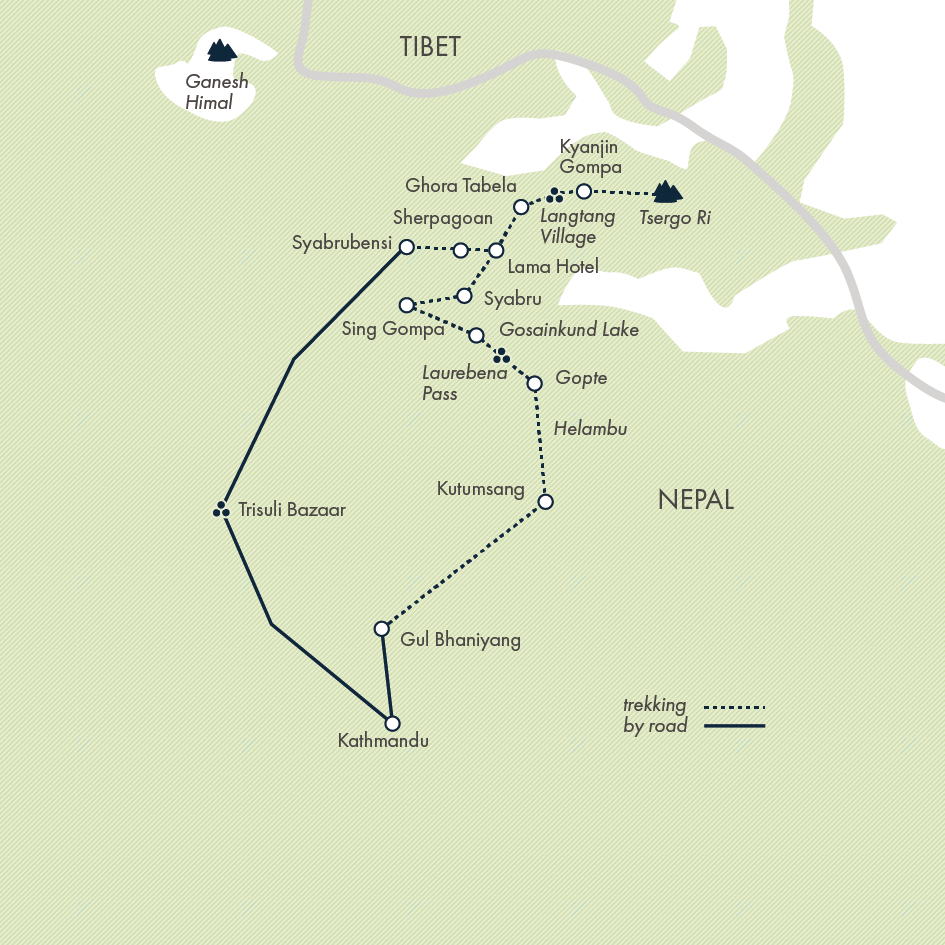- Key Info
- Overview
- Photos
- Dates

Embark on a trekking adventure through the Langtang and Gosainkund Lakes, experiencing breathtaking mountain panoramas and fewer trekkers.
We stay in teahouses for most of this adventure, a classic experience for trekkers in the Himalaya. We spend the rest of our time in the Royal Singi Hotel in Kathmandu, a three-star hotel with a restaurant, bar, and complimentary wifi throughout.
- Visit the holy Gosainkund Lake nestled amid the mountains.
- Enjoy varied scenery: mountain panoramas, rhododendron forests, glaciers, and gompas.
- Experience far fewer trekkers than in other Nepal trekking regions.
- See fantastic flora and fauna in spring.
- Enjoy views of the great peak of Langtang Lirung.
- Trek through the Langtang Valley with its stunning landscapes.
- Explore the cultural and spiritual sites, including Kyanjin Gompa.